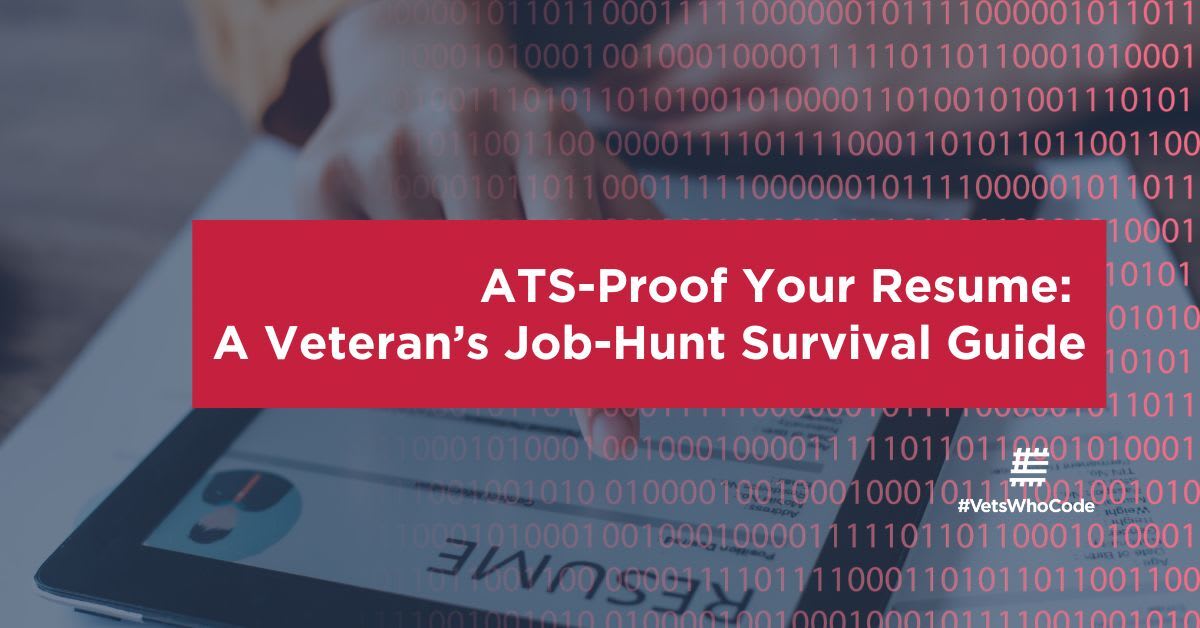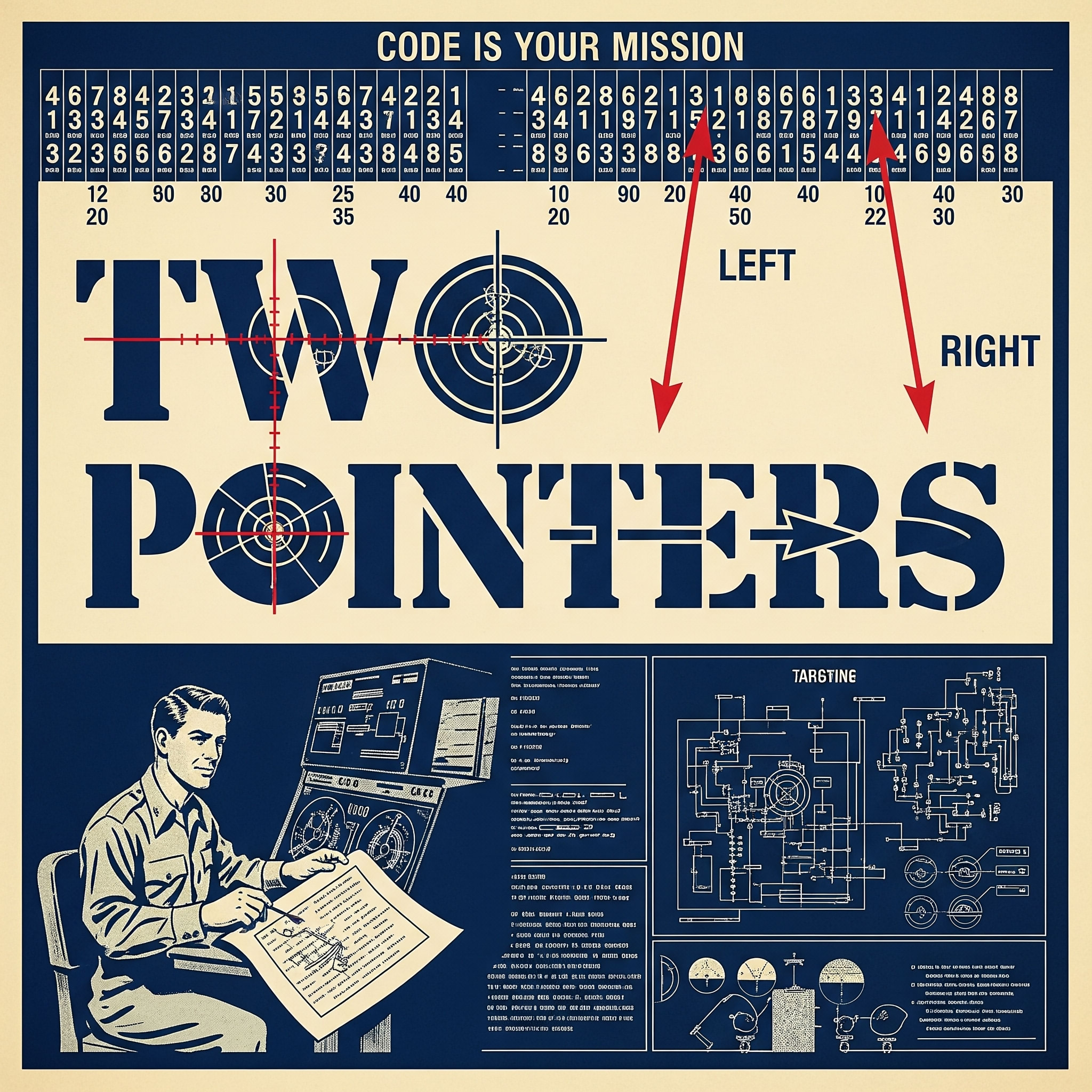🎧 Beat the Bots Audio Brief
Listen to this quick audio rundown on how to outsmart ATS systems and get your résumé seen.
Time to read: 8 minutes
Key Takeaways:
- Learn how ATS systems evaluate your resume
- Get actionable strategies for ATS optimization
- Access veteran-tested tools and templates
At Vets Who Code, we don't just train veterans to write clean, production-grade code—we train them to navigate every obstacle between them and a meaningful tech career. And one of the most frustrating barriers they face? The Applicant Tracking System, or ATS.
You can be the most talented dev in the room. But if your resume gets flagged—or worse, ignored—by an ATS, none of that matters. No interview. No shot. Just silence.
According to recent studies, over 75% of resumes never make it past ATS systems. For veterans transitioning into tech, this invisible barrier can be particularly challenging.
🧠 What Is the ATS, Really?
Think of the ATS as the first line of defense in a company's hiring process. Before a human ever reads your resume, a robot scans it. It's not judging your value. It's scanning for keyword matches, formatting compliance, and basic alignment with the job description.
If your resume isn't formatted the right way or doesn't include the right terms, it's rejected. Not by a recruiter—but by code.
This is where a lot of veterans and developers go wrong. Not because they aren't skilled—but because no one taught them how to speak "robot."
✅ How We Train Our Troops to Win Against ATS
We apply the same principles that worked in the military: know the system, adapt to the system, and outperform within the system.
1. Tailor Every Resume
- Use the exact keywords from the job description.
- Mirror the job title when possible. If they say "Frontend Engineer," don't just say "UI Developer"—find a way to include both.
- Use synonyms ("JavaScript" and "JS") to maximize match chances.
2. Format It for Machines
- Stick to standard fonts like Arial, Calibri, or Times New Roman.
- Avoid columns, tables, headers, or footers. These break parsing.
- Use a clean structure: Summary, Experience, Skills, Education, Certifications.
- Submit as a .docx if you're unsure—it's safest for parsing.
3. Make Skills Pop
- Use a bullet or comma-separated list of hard and soft skills.
- Be specific and match industry phrasing: "Next.js," "Test-Driven Development," "CI/CD."
- Don't bury important tech behind vague phrases.
4. Bullet Points That Matter
Start with action verbs: Built, Shipped, Led, Implemented.
Quantify impact wherever possible:
- "Improved test coverage from 60% to 90%."
- "Reduced API latency by 150ms."
5. Contact Info Done Right
Never put it in a header or footer—it may not get scanned.
Always include:
- Full Name
- Phone Number
- Professional Email
- LinkedIn URL
- GitHub Profile
🚫 What to Avoid (No Matter What)
- No images, logos, icons, or Canva resume templates.
- No abbreviations without defining them at least once (e.g., "Test-Driven Development (TDD)").
- No clever formatting. ATS doesn't care—it just breaks.
- No jargon unless it appears in the job listing. Speak their language.
⚙️ Tools of the Trade
We've tested dozens of ATS optimization tools. Here are the ones that consistently deliver results for our veterans:
- Jobscan.co – Our #1 recommended tool. Compares your resume against a job description and shows keyword gaps. Free plan available for veterans.
- Teal HQ – Tracks your job applications and gives live keyword match analysis. Perfect for managing multiple applications.
- Resumeworded.com – Provides detailed ATS scoring and recommends ATS improvements.
- Grammarly – Keeps your language clean and professional. We recommend the premium version for technical writing.
💡 Pro Tips From Our Senior Developers
Our experienced developers who successfully navigated ATS systems share these insights:
- Use Stack-Specific Keywords: If the job mentions "React.js," include both "React.js" and "React" as some ATS systems may search for either variation.
- Include Certification Numbers: For AWS, Azure, or other certs, include the actual certification numbers. Some ATS systems verify these.
- Git Commands Matter: Include specific Git workflows you're familiar with (
git rebase,git merge, etc.) as these are often screened for. - Testing Framework Specifics: Don't just say "testing"—specify "Jest," "Mocha," "Cypress," etc.
🔁 Our Strategy Framework
Here's the process we teach every Vets Who Code troop:
- Start with a master resume (your core, modular setup).
- Use tools to analyze the job description and extract 5–7 must-have keywords.
- Update headline, summary, and a few bullet points with those terms.
- Run it through an ATS check like Jobscan or Teal.
- Submit and move on—don't overthink.
🎯 Time Management: The 10–10–80 Rule
We don't believe in spending 8 hours rewriting resumes. Here's how we split time:
- 10% = Building a strong base resume
- 10% = Customizing it for a job
- 80% = Networking, applying with intent, publishing your work, getting referrals
You don't win jobs through formatting—you win them by getting seen and starting real conversations.
🪖 Bottom Line
You don't need the perfect resume.
You need a resume that gets past the bots and into human hands.
From there, your skills and your story take over.
Support Vets Who Code
If this story resonates with you, consider supporting Vets Who Code to help more veterans transition into successful tech careers. Your donations can make a significant impact. You can also sponsor us on GitHub to get technical updates and support our mission. Together, we can make a difference.

